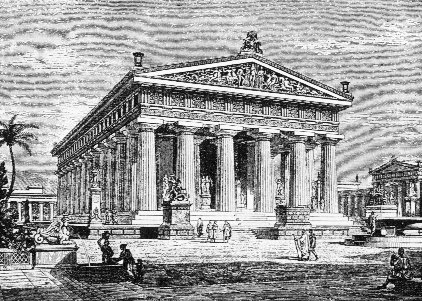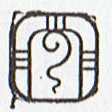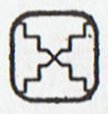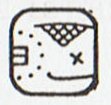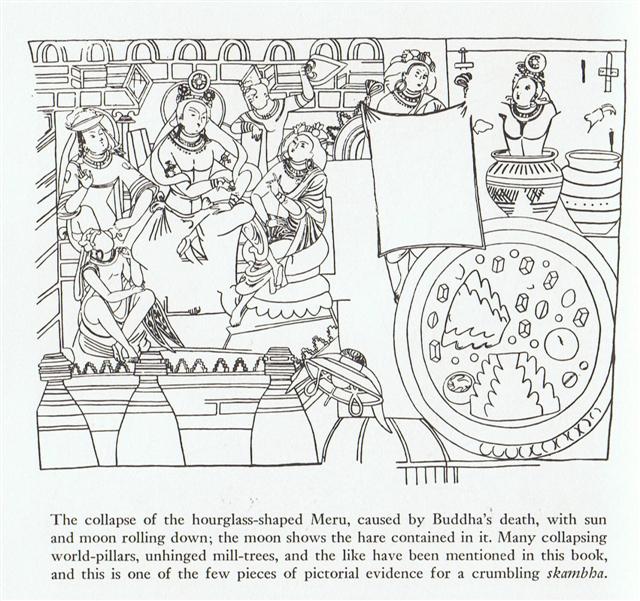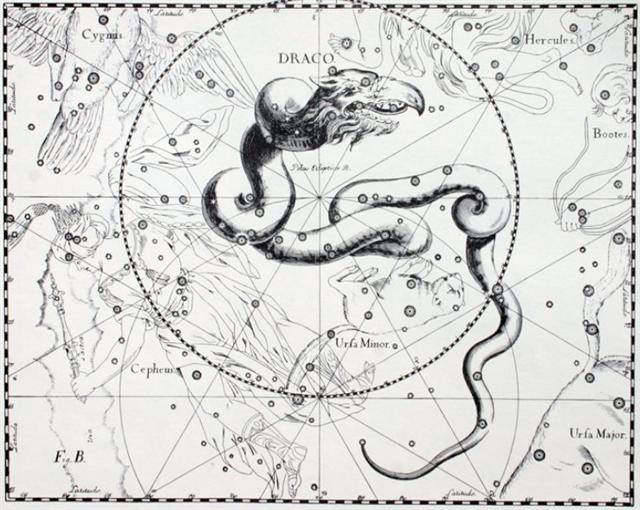230. The coincidences continue to pile up. Just the other evening there was a TV program discussing what had happened to the prosperous ancient Greek city named Helice. I have to document it now when my impressions still are fresh. There was a war ongoing between Sparta and Athen, but Helice refused to be drawn in to support any of them. Therefore she could remain in full power and continue in her role as a central pivot for merchant trade by sea both for her colonies in the east and for those in the west. Her guardian god was Poseidon, who when treated properly would assure the ships a safe journey. A great temple had been created for him.
But then disaster struck, when Poseidon became offended by the very bad manners of Helice towards some ambassadors from abroad who had come and in order to obtain a few potent items for erecting temples to Poseidon in their own land. Instead they were simply dismissed and executed. So Poseidon - god not only for the Sea but also of Earthquakes - movements (Ollin) of the Earth (Caban),
created a sudden major shiift in the crust of Mother Earth, which resulted in an enormous tsunami wave washing ashore upon Helice, instantly submerging it completely with all its inhabitants and leaving not a trace left above ground, it was deleted from the face of the earth. Which modern archeology now had confirmed as fact. I would not have bothered to document this here and now had I not recently recalled the name Helice: ... Another name for the Goddess of the Mill was Artemis Calliste, or Callisto ('Most Beautiful'), to whom the she-bear was sacred in Arcadia; and in Athens at the festival of Artemis Brauronia, a girl of ten years old and a girl of five, dressed in saffron-yellow robes in honour of the moon, played the part of sacred bears. The Great She-bear and Little She-bear are still the names of the two constellations that turn the mill around. In Greek the Great Bear Callisto was also called Helice, which means both 'that which turns' and 'willow-branch' - a reminder that the willow was sacred to the same Goddess ...
The Mill in question (→ Hamlet's Mill) was suddenly unhinged (as if by a great earthquake in the sky), and due to the precession it sank down beneath the waves of the Sea (→ Helice):
... Snorri Sterluson explains why 'Frodi's grist' is a kenning for gold. Frodi ruled during a peaceful and productive period, contemporaneous with Augustus's Pax Romana and the birth of Christ; hence the kenning. There were neither thieves nor robbers during this period, 'so that a gold ring lay long on Jalang's heath'.
Snorri continues his account with the legend of the mill beyond what is told in the song: The girls' grinding produced an army hostile to Frodi. On the very day of the girls' predictions, the sea-king, Musing (Son of the Mouse), landed on the Danish shore, killed Frodi, and took away Grotti and the women on his ship. The girls were bidden to grind out salt on the mill. At midnight they asked for further instructions. 'Keep grinding', he told them. Then they ground with such vigor that the ship sank. Water poured into the eye of the mill, creating the maelstroem of the sea. Therefore the sea was salt. Incidentally, the mill was given a kenning, Serpent's Couch ...
This in turn makes me remember a curious Sign in form of a Mouse which a famous British wood carpenter always carved into his creations, for instance as an integral part of the leg of a table.
... This [σ Sagittarii] has been identified with Nunki of the Euphratean Tablet of the Thirty Stars, the Star of the Proclamation of the Sea, this Sea being the quarter occupied by Aquarius, Capricornus, Delphinus, Pisces, and Pisces Australis. It is the same space in the sky that Aratos designated as Water ... ... In China, with Capricornus, Pisces, and a part of Sagittarius, it [Aquarius] constituted the early Serpent, or Turtle, Tien Yuen; and later was known as Hiuen Ying, the Dark Warrior and Hero, or Darkly Flourishing One, the Hiuen Wu, or Hiuen Heaou, of the Han dynasty, which Dupuis gave as Hiven Mao. It was a symbol of the emperor Tchoun Hin, in whose reign was a great deluge; but after the Jesuits came in it became Paou Ping, the Precious Vase. It contained three of the sieu, and headed the list of zodiac signs as the Rat, which in the far East was the ideograph for 'water', and still so remains in the almanacs of Central Asia, Cochin China, and Japan ... I have not heard, however, any commentator connecting this fact with how his table surfaces were hewed out by Adze - like when the Polynesians hewed out planks for their ships (which always are female in character) - resulting in a beautiful wavy surface as if had been the surface of the Sea instead of the normal flat table surface. Toki. Small basalt axe. Vanaga. Stone adze. Van Tilburg. Ha'amoe ra'a toki = 'Put the adze to sleep' (i.e. hide it in the temple during the night). Barthel. Month of the ancient Rapanui calendar. Fedorova according to Fischer. To'i. T. Stone adze (e to'i purepure = with the wounderful adze). Henry. The Araukan Indians in the coastal area of northern Chile, have customs similar to those on the Marquesas and in both areas toki means adze according to Josť Imbelloni. The Araukans also called their chief of war toki and the ceremonial adze symbolized his function and was exhibited at the outbreak of war. In Polynesia Toki was the name of a chief elevated by the Gods and his sign was the blade of a toki. Fraser. Axe, stone hatchet, stone tool ...; maea toki, hard slates, black, red, and gray, used for axes T. P Pau.: toki, to strike, the edge of tools, an iron hatchet. Mgv.: toki, an adze. Mq.: toki, axe, hatchet. Ta.: toi, axe. Churchill. A Maori saying: he iti toki, e rite ana ki te tangata = though the adze be small, yet does it equal a man. (Starzecka)
... On February 9 the Chorti Ah K'in, 'diviners', begin the agricultural year. Both the 260-day cycle and the solar year are used in setting dates for religious and agricultural ceremonies, especially when those rituals fall at the same time in both calendars. The ceremony begins when the diviners go to a sacred spring where they choose five stones with the proper shape and color. These stones will mark the five positions of the sacred cosmogram created by the ritual. When the stones are brought back to the ceremonial house, two diviners start the ritual by placing the stones on a table in a careful pattern that reproduces the schematic of the universe. At the same time, helpers under the table replace last year's diagram with the new one. They believe that by placing the cosmic diagram under the base of God at the center of the world they demonstrate that God dominates the universe. The priests place the stones in a very particular order. First the stone that corresponds to the sun in the eastern, sunrise position of summer solstice is set down; then the stone corresponding to the western, sunset position of the same solstice. This is followed by stones representing the western, sunset position of the winter solstice, then its eastern, sunrise position. Together these four stones form a square. They sit at the four corners of the square just as we saw in the Creation story from the Classic period and in the Popol Vuh. Finally, the center stone is placed to form the ancient five-point sign modern researchers called the quincunx ...
|
